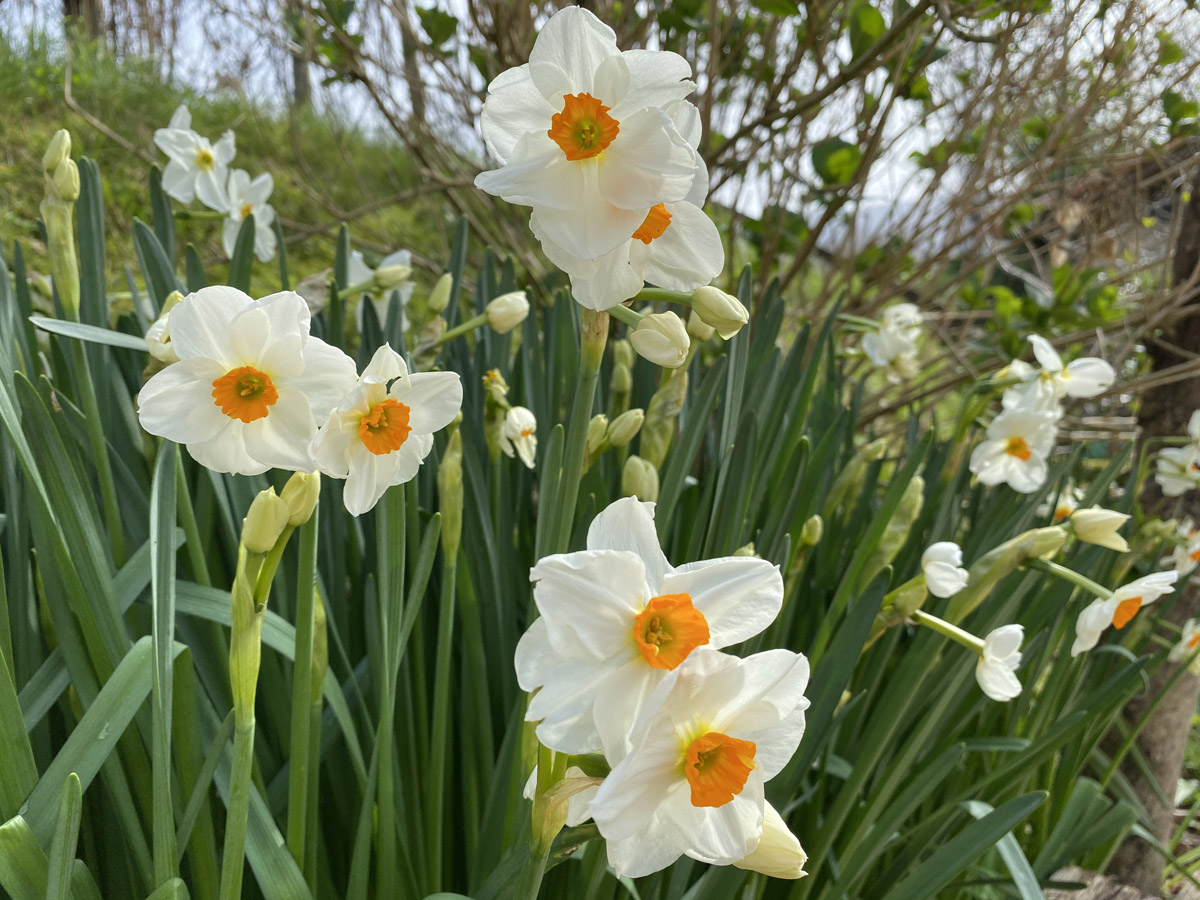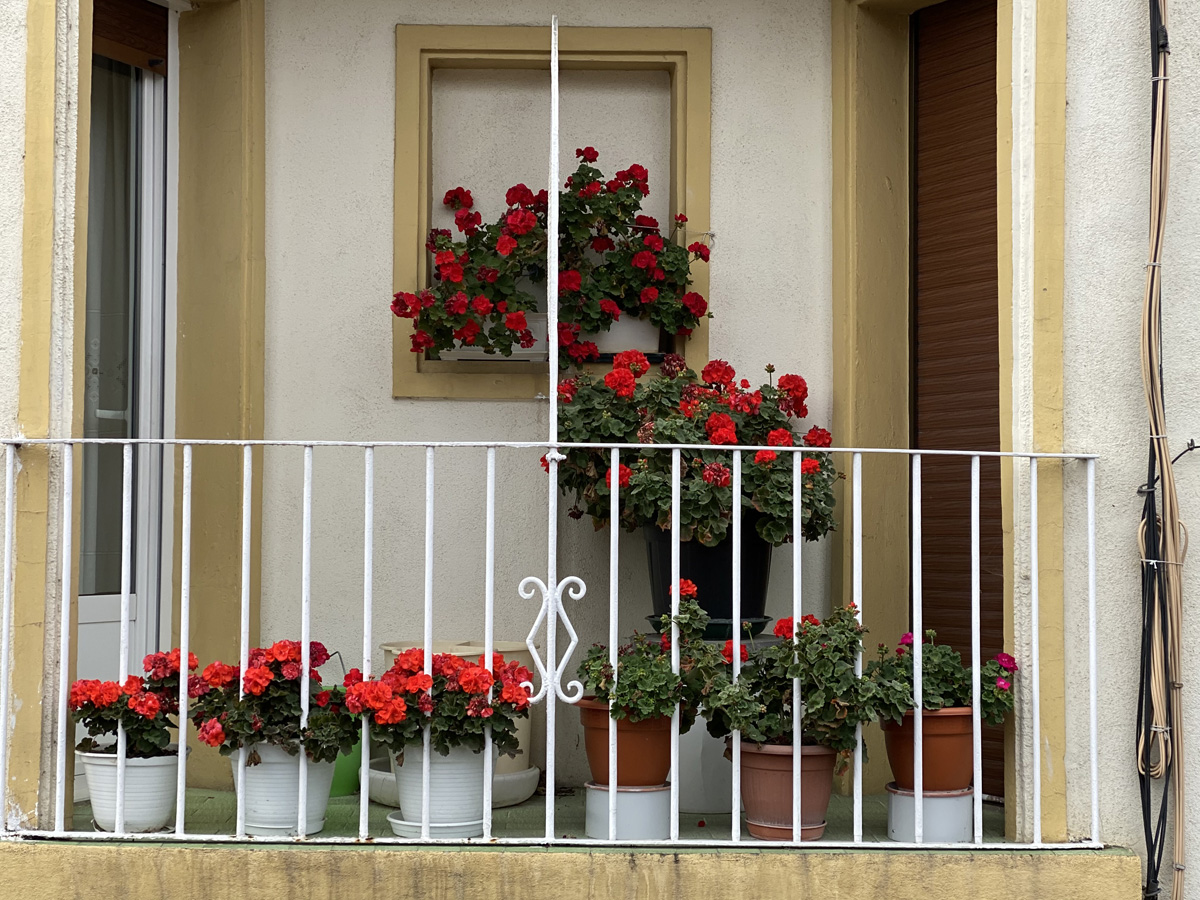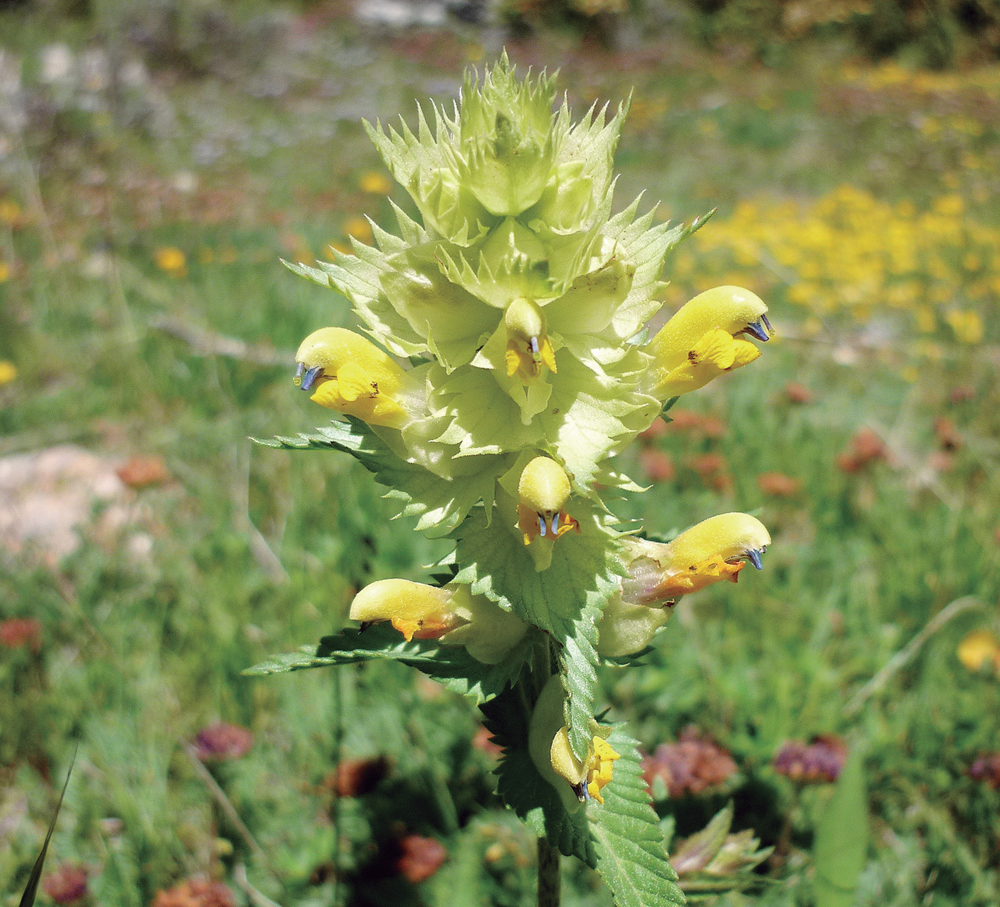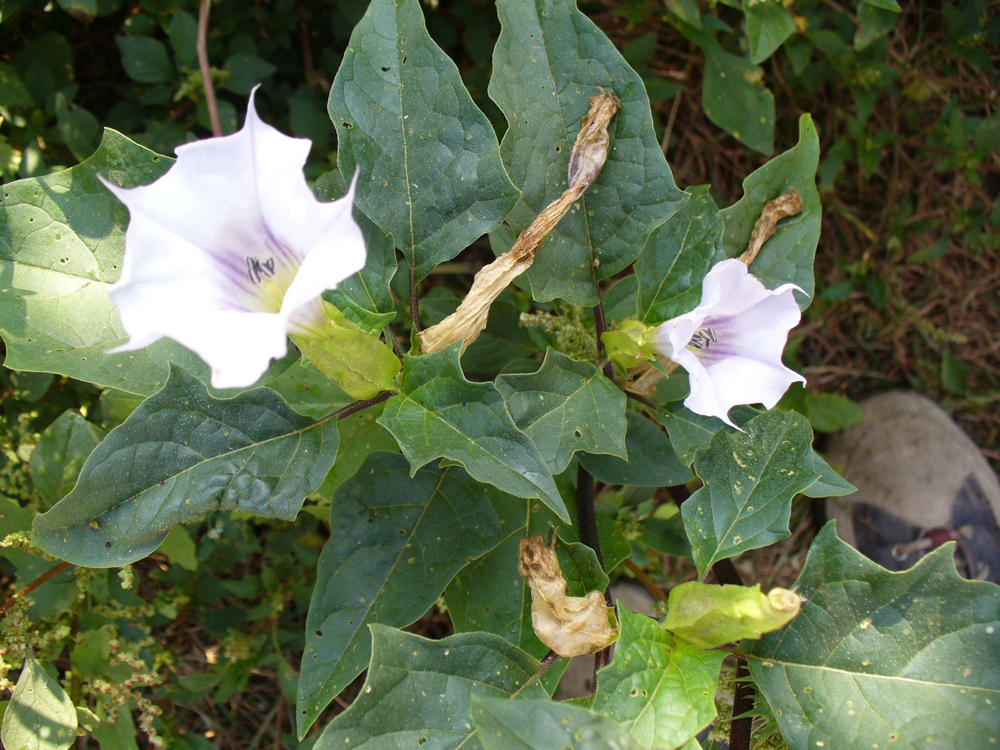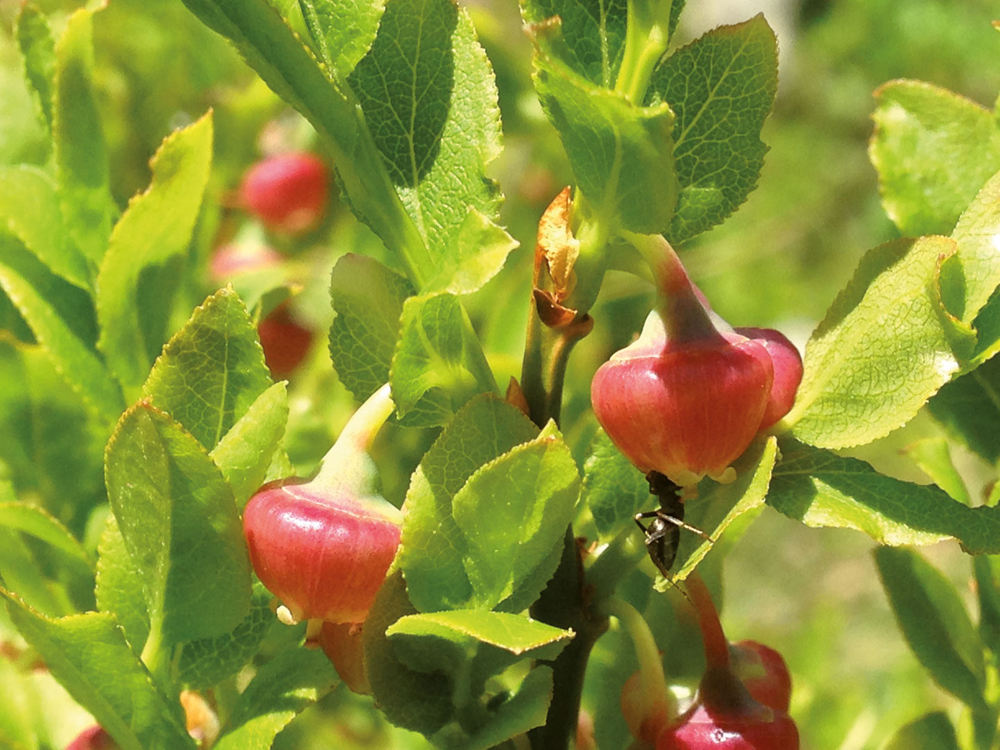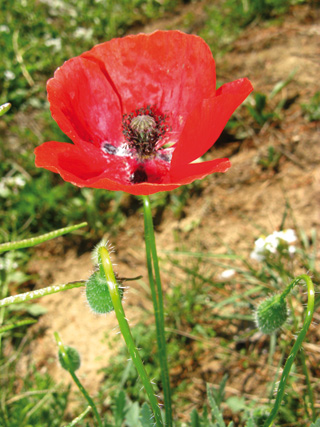Phytofood
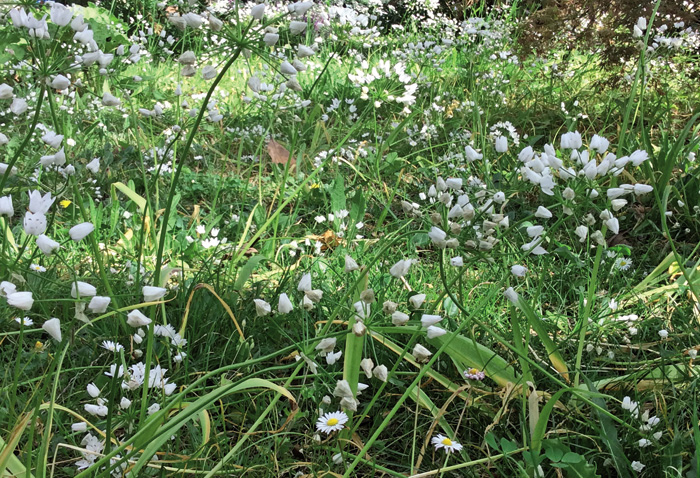
This first day of April, an Italian friend has just sent me a photo of the bouquet of flowers he has put to beautify the food table. What envy mine! Red black camellia (Camellia sp.) and Forsithia viridisima of yellow gold, a pink peony (Paeonia arborea) and a white and wild garlic. I told him it seemed like an ossezno, Allium ursinum. He says no, if it is “aglio pelosetto,” Allium subhirsutum. She has a flower in front of her nose and I can't give in. To the Italian “I give up”. I have not found him a name in Euskera and, turning to his, I propose a “hairy garlic”, remembering, by the way, the hairy edge of the leaves.
On the only winter flower, three signs that the new summer has crashed. That is the heart of Italy, ahead of us compared to ours; at least, climatologically, no doubt.
Discussing whether I was a wild garlic or the other, he sent me pictures of the prairie next to his house. So yes, I've been jealous. Due to the donation of flowers, do not cut the herb: “Il prato è meraviglioso, pieno de fiori!” And he was scratching and scratching the wound of envy ... How they use in the kitchen, like the leaf, the subterranean head. In the hometown of his mother-in-law, in Sardinia, they particularly want him, how raw you are to enjoy salads, like condiments or stimulants. And he taught me a new word: hairy garlic is phyto-nutritional. As far as I know, phytofood represents the art of using wild plants for food. In our country it is called ethnobotany, but in my opinion in too broad a sense. It seems to me that ethnobotany encompasses all uses of plants. From now on I know: in Ethnobotany I will call “phytofood” the field of food. Grazie, Francesca!
In our latitude the sweat of most plants moves in the spring, and in this time we will enjoy the great blooms. Flowers are the symbol of beauty: to see, to smell... And to try? Did you eat a flower? I'm sure it does.
Who has not eaten artichokes (Cynara cardunculus var... [+]
Lilipak edo nartzisoak loretan dira. Nabarmen adierazten dute mendean hartutako bere lurren berri. Neguan loratzen dira, kolore zuri-hori ikusgarritan, eta usaina bafadaka hedatzen dute. Multzoka bizi dira; lurpean erraboila emankorra dute, eta bat zen tokian, urtetik urtera... [+]
Udari begira jarri gaituen eguraldi honek landareak ederki mugitu ditu. Gu ere bai. Zaldibarren, Eitzaga auzoko zabortegiko madarikazioaren ardurak eskatzera, eta langileei, haien senideei eta auzotarrei babesa emateko manifestazioan Eibarko Amañatik abiatu ginen. Hasi... [+]
I remember as a kid how we called it the "little boy." The flower reminded us of the chicken's head. José María Lakoizketa was named “kurkubia” in Bertizarana in 1888, as its fruit resembles a kurkubi or bottle. He says in Cinco Villas they call him “cascabel.” In 1976... [+]
The danger of plant extinction may have many reasons. In the past, they were divided into three groups: diseases, pests and herbs or “bad” plants. Today, there is a tendency to call plague to all plant disasters. Previously, an accident caused by the proliferation of... [+]
In the pile of manure and waste there is usually a guest in summer, although not always: estrammonium or estrammonium, Datura stramonum. Some have also received the names of “carbonero” or “higuzoro” for this plant. It is a striking, upright plant, with a glowing... [+]
The year of Dalia, the pinnata Dahlia, was chosen this year by the organizers of the festival. Well said, it's the year of Dahlia. Dictionaries and encyclopedias in Euskera call this plant “dalia”; I think we should call it “dahlia”.
The Spanish invaders who met Dahlia... [+]
I have been a little quieter on the day when the night has become longer than the clear day and I am glad that we are six months like this. I cannot deny that summer has been beautiful, but it smells better to fall. Plants are made “tizas” with the arrival of autumn. The... [+]
Plants are known to smell, more and more. We had known for a long time that plant martingale was to protect itself from herbivorous animals: the plant that has been bitten releases the odor to warn neighboring plants, that they will knead the leaves and will not be of taste to... [+]
Lately, I asked Joxe Anton Arze, one of the most beautiful Basque landscape architects, about the names of the plants that had white flowers. It's already in its Mortecine light.
Grapefruit (Narcissus poeticus), Star perico (Stelaria holostea), White hawthorn (Crataegus... [+]
His relative is the Lo-Belar (Papaver somniferum), but compared to him is the Michoneta (Papaver Rhoeas). The poppy is well known; it is also known as “urdemutur” and “urdamutur”. When spring arrives, the earth will blur every year. It also revives the blush of my shame,... [+]












